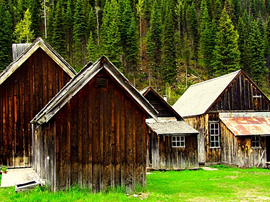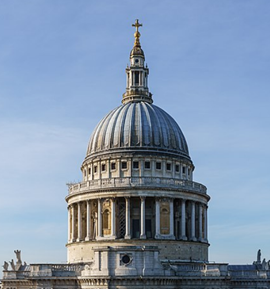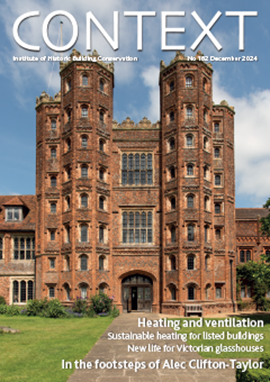Scan to BIM for Historic Buildings
Contents |
[edit] Introduction
Scan to BIM services for historic buildings are transforming the way we preserve and manage our architectural heritage. By employing advanced 3D scanning technology and integrating it with Building Information Modelling (BIM) experts can produce highly accurate digital representations of historical structures through point cloud to BIM services. This approach captures the finest details and nuances of these buildings, facilitating more effective preservation and restoration. The integration of Scan to BIM services enables a meticulous digital record of cultural landmarks, thus bridging the gap between historical integrity and modern innovation, ensuring that these significant structures are preserved for future generations with both precision and respect.
[edit] The Role of Scan to BIM in Historic Preservation
Accurate Representation of Architectural Details:
Historic buildings often feature elaborate details and unique architectural elements that traditional methods might struggle to capture. Scan to BIM addresses this challenge through 3D laser scanning, a technique that meticulously documents every facet of a building’s geometry. This process creates a highly detailed point cloud that serves as the foundation for building a digital model. Such precision ensures that every decorative flourish and structural nuance is accurately represented and preserved.
Supporting Structural Integrity Assessments:
As historic buildings age, they may face structural challenges requiring careful attention. The digital model produced by Scan to BIM offers invaluable insights into the building’s current state, allowing engineers to conduct thorough structural analyses. This enables the identification of potential weaknesses and the development of strategies for addressing structural issues while respecting the building’s historical value.
Facilitating Adaptive Reuse and Renovation:
Converting historic buildings for modern uses whether transforming an old factory into a contemporary office space or repurposing a historic home into a museum requires a detailed understanding of the building’s original layout and condition. Scan to BIM provides a comprehensive digital blueprint that aids in designing renovations balancing new functionalities with the preservation of historical character.
Ensuring Compliance with Conservation Standards:
Preserving historic buildings often involves adhering to stringent conservation guidelines and regulations. The detailed documentation provided by Scan to BIM supports compliance by offering a precise record of the building’s existing conditions. This transparency facilitates the approval process and ensures that restoration efforts are aligned with established preservation standards.
[edit] Key Services in Scan to BIM for Historic Buildings
3D Laser Scanning Services:
Central to Scan to BIM is 3D laser scanning, which captures the building’s geometry with exceptional detail. This service generates a point cloud, a collection of millions of data points that map the building’s physical attributes. This data is crucial for creating a faithful digital replica of historic structures.
Point Cloud to BIM Conversion Services:
The conversion of point cloud data into a usable BIM model is a critical step. Point Cloud to BIM Services transforms raw scan data into a detailed 3D model integrating information about the building’s materials, structural elements, and historical context. This model becomes a vital tool for restoration planning and analysis.
-
Tailored to the specific needs of historic buildings, Heritage BIM modelling services ensure that the digital model captures the building’s historical and architectural essence. This includes documenting original materials, intricate designs, and historical data, and creating a model that reflects the building’s significance.
Restoration Planning and Simulation:
With the BIM model, restoration and renovation planning services can simulate various scenarios to determine the best approach for preserving and adapting the building. This allows for informed decision-making that respects the building’s historical value while accommodating modern needs.
Long-Term Monitoring and Maintenance:
Scan to BIM also supports long-term monitoring and maintenance. The BIM model serves as an evolving document that can be updated as the building undergoes changes or repairs, helping to track its condition and plan future conservation efforts.
[edit] The Process of Scan to BIM for Historic Buildings
Site Survey and Planning:
The journey begins with a comprehensive site survey to understand the building’s layout and identify key areas for scanning. This planning stage ensures that the scanning process captures all necessary aspects of the building.
-
Using advanced laser scanners, the building is captured from multiple angles to generate a detailed point cloud. This step creates a digital record of the building’s geometry, including all visible and hidden features.
Data Processing and Model Creation:
The point cloud data is processed to remove any inaccuracies and align multiple scans. The refined data is then used to create a detailed BIM model, which includes not only the building’s physical attributes but also information about materials and structural elements.
Model Analysis and Application:
The BIM model is used for various analyses and simulations, including structural assessments and restoration planning. This model becomes a central tool for all stakeholders involved in the preservation project.
Documentation and Archiving:
The BIM model is documented and stored in a digital archive. This ensures that the information is preserved and accessible for future use, allowing continued reference and support for ongoing conservation efforts.
[edit] Conclusion
Scan to BIM has truly transformed how we preserve and restore historic buildings. Creating detailed digital models, this technology captures every intricate detail and essential structural element, ensuring that the historical and cultural significance of these landmarks is preserved for future generations. With services like 3D laser scanning, point cloud to BIM conversion, and heritage BIM modelling, we can accurately assess the condition of historic structures, plan thoughtful renovations, and ensure we meet conservation standards. Additionally, restoration planning, simulation, and long-term monitoring help us maintain these treasures effectively. As we look to the future, Scan to BIM will remain a key tool in protecting and honouring our architectural legacy.
--Snehal Dodha 13:32, 04 Sep 2024 (BST)
[edit] Related articles on Designing Buildings
- Artificial intelligence.
- Beyond BIM: Knowledge management for a smarter built environment.
- BIM articles.
- BIM and facilities management.
- BIM for mechanical electrical and plumbing drawings.
- Building information modelling BIM.
- Global BIM market.
- How BIM can cause needless early stage MEP design concerns.
- IHBC articles.
- Mechanical, electrical and plumbing MEP.
- MEP Coordination.
- MEP BIM and the building lifecycle
- Revit.
- Sustainability in building design and construction.
- The sustainability of construction works.
- UsBIM.
- Integrating Scan to BIM for Sustainable Smart City Planning.
- Scan to BIM in Construction
- Scan to BIM: Everything you need to know.
IHBC NewsBlog
SAVE celebrates 50 years of campaigning 1975-2025
SAVE Britain’s Heritage has announced events across the country to celebrate bringing new life to remarkable buildings.
IHBC Annual School 2025 - Shrewsbury 12-14 June
Themed Heritage in Context – Value: Plan: Change, join in-person or online.
200th Anniversary Celebration of the Modern Railway Planned
The Stockton & Darlington Railway opened on September 27, 1825.
Competence Framework Launched for Sustainability in the Built Environment
The Construction Industry Council (CIC) and the Edge have jointly published the framework.
Historic England Launches Wellbeing Strategy for Heritage
Whether through visiting, volunteering, learning or creative practice, engaging with heritage can strengthen confidence, resilience, hope and social connections.
National Trust for Canada’s Review of 2024
Great Saves & Worst Losses Highlighted
IHBC's SelfStarter Website Undergoes Refresh
New updates and resources for emerging conservation professionals.
‘Behind the Scenes’ podcast on St. Pauls Cathedral Published
Experience the inside track on one of the world’s best known places of worship and visitor attractions.
National Audit Office (NAO) says Government building maintenance backlog is at least £49 billion
The public spending watchdog will need to consider the best way to manage its assets to bring property condition to a satisfactory level.
IHBC Publishes C182 focused on Heating and Ventilation
The latest issue of Context explores sustainable heating for listed buildings and more.
















